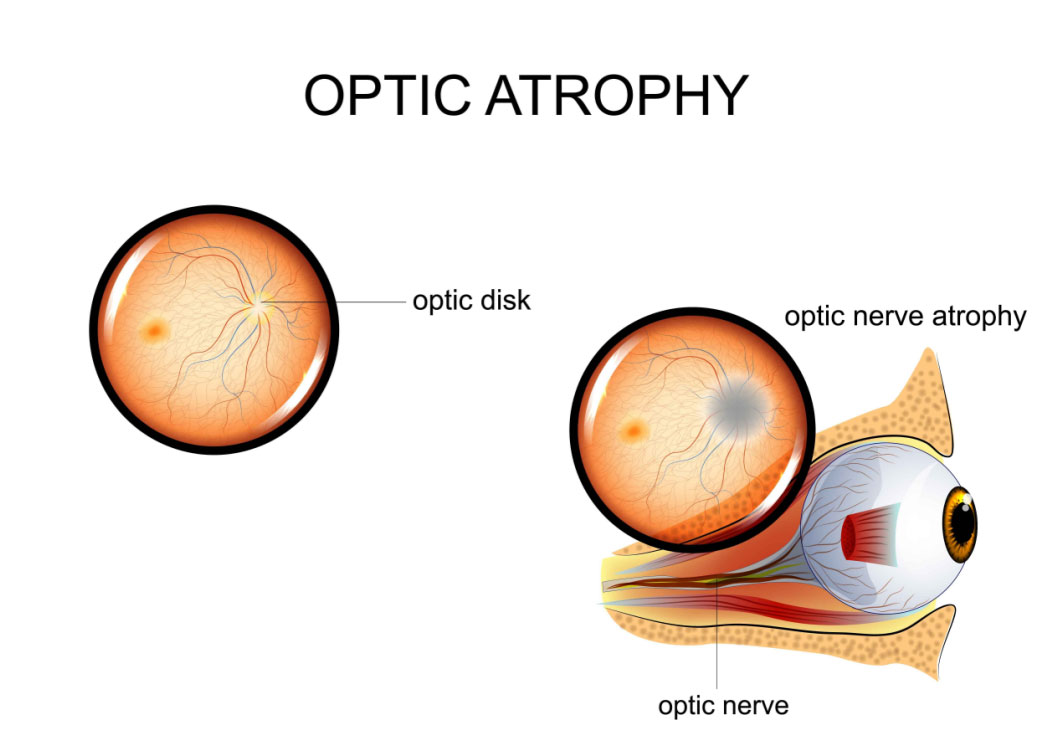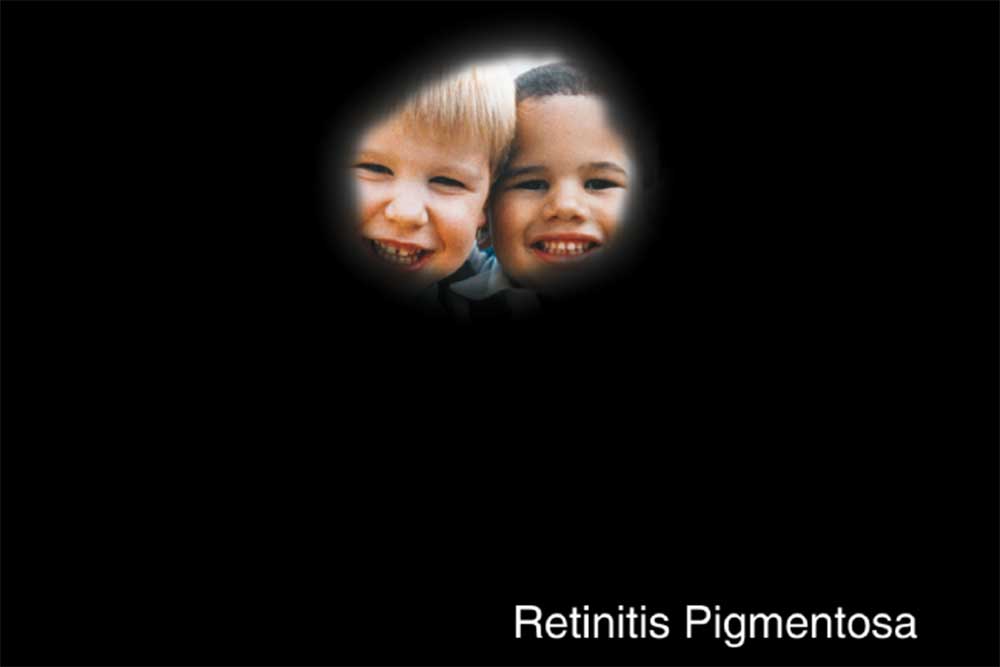Causes Of Low Vision
Low vision, characterized by significant visual impairment that cannot be fully corrected by traditional eyewear or medical interventions, can arise from various underlying causes. Age-related conditions like macular degeneration, diabetic retinopathy, and glaucoma are leading contributors to low vision, often affecting the central or peripheral vision. Inherited conditions, such as retinitis pigmentosa, can result in progressive loss of sight over time. Eye injuries, trauma, and certain medical disorders like cataracts or optic nerve damage can also lead to low vision. Additionally, systemic health issues like diabetes and neurological conditions can impact visual function. Understanding the diverse causes of low vision is crucial for tailored interventions and support to enhance the quality of life for individuals dealing with visual impairment.
Low Vision Definitions
Partially Sightedness
Best corrected vision, using standard prescription lenses, that is equal to 20/70 but better than 20/200.
Legal Blindness
Best corrected vision, using standard prescription lenses, that is equal to or worse than 20/200 AND/OR a reduced field of vision less than 20 degrees. (Normal Visual Field, if you were to focus on a single point in front of you would be: approximately 100 degrees to the outside, 60 degrees to the inside, 70 degrees below or 60 degrees above said point of focus)
Low Vision Eye Diseases
Age Related Macular Degeneration

Age-Related Macular Degeneration is a condition where the center of a person's vision becomes blurry or distorted. AMD affects the macula, which is the part of the eye responsible for sharp, detailed vision. As the disease progresses, it becomes harder for the person to read, recognize faces, and see fine details.
AMD is most common in older adults and can lead to a gradual loss of central vision, making it challenging to perform everyday tasks that require clear sight. However, the peripheral (side) vision usually remains unaffected.
While there is no cure for AMD, certain treatments and low vision aids, such as magnifiers and special glasses, can help improve vision and make daily activities more manageable. Regular eye checkups are crucial for early detection and proper management of AMD to preserve the best possible vision.
Albinism

Low vision caused by albinism is a condition where a person is born with a lack of pigment in their eyes, skin, and hair. This genetic condition affects the production of melanin, which is responsible for giving color to these parts of the body.
In the eyes, the lack of pigment can lead to various vision problems, such as reduced visual acuity, sensitivity to light, and problems with depth perception. The eyes may also lack the normal development of the retina and other visual structures, causing visual impairment.
People with albinism often have difficulty seeing in bright light and may experience nystagmus (involuntary eye movements). Due to these challenges, they may have low vision, making it hard to read, recognize faces, or see fine details.
While there is no cure for albinism, individuals can benefit from low vision aids and support to maximize their remaining vision. Sunglasses and hats can help with light sensitivity, while visual aids like magnifiers or special glasses can assist with reading and other tasks.
Early detection and regular eye checkups are important to manage the condition effectively and provide the necessary visual assistance to enhance the person's quality of life.
Brain Injury / Stroke

Low vision caused by a brain injury is a condition where damage to the brain affects a person's ability to see clearly. The brain is a crucial part of the visual system, as it processes the information received from the eyes to form the images we see.
When the brain sustains an injury, such as from a head trauma, stroke, or other neurological conditions, the visual processing may be disrupted. This can lead to various vision problems, depending on the area of the brain affected.
People with low vision caused by a brain injury may experience difficulties with visual perception, visual memory, and visual processing. They may have trouble recognizing faces, reading, judging distances, or coordinating their eye movements properly.
Treatment for low vision due to a brain injury often involves vision rehabilitation and therapy to help the person adapt to their visual challenges. Visual aids, such as magnifiers or specialized glasses, may be beneficial in optimizing their remaining vision.
It's essential for individuals who have experienced a brain injury and are facing vision problems to undergo a comprehensive eye and neurological evaluation. This will help determine the extent of the vision impairment and guide the appropriate management strategies to improve visual function and enhance their quality of life.
Cataracts

Low vision caused by congenital cataracts is a condition where a person is born with cloudy areas in the lenses of their eyes. The lenses are normally clear and help focus light onto the retina, allowing us to see clearly. However, with congenital cataracts, the cloudiness prevents light from reaching the retina properly, resulting in reduced vision.
Since cataracts affect the clarity of the lenses, people with this condition may experience blurred or hazy vision, even if they are looking at objects up close. The cloudiness can vary in severity, and it may affect one or both eyes.
Congenital cataracts can be present at birth or develop shortly after, and they can be caused by various factors, including genetic conditions or infections during pregnancy. If left untreated, cataracts can lead to permanent vision loss.
Fortunately, cataracts can often be treated with surgery to remove the cloudy lens and replace it with an artificial one. Early detection and timely intervention are essential for the best outcomes. After surgery, visual aids like glasses or contact lenses may be needed to help optimize vision and address any remaining visual challenges. With appropriate treatment and support, people with low vision caused by congenital cataracts can achieve improved vision and lead fulfilling lives.
Diabetic Retinopathy

Low vision caused by diabetic retinopathy is a condition that affects the eyes of people with diabetes. Diabetic retinopathy occurs when high blood sugar levels damage the blood vessels in the retina, which is the part of the eye that senses light and sends visual signals to the brain.
As the condition progresses, the damaged blood vessels can leak fluid or blood into the retina, causing vision problems. People with diabetic retinopathy may experience blurry or distorted vision, difficulty seeing colors, and even partial vision loss.
Early detection and proper management of diabetes are essential to prevent or slow down the progression of diabetic retinopathy. Regular eye checkups are crucial for identifying any changes in the eyes and receiving appropriate treatment, which may include laser therapy or injections to stop the progression of the disease.
While diabetic retinopathy may not be entirely reversible, timely intervention and lifestyle changes can help preserve the remaining vision and improve the person's quality of life. Low vision aids, such as magnifiers and specialized glasses, may also be helpful in maximizing their visual abilities for daily activities.
Eye Injuries

Low vision caused by eye injuries is a condition where a person's vision is permanently affected due to physical trauma to one or both of their eyes. Eye injuries can result from accidents, falls, sports-related incidents, or any other situations where the eye is subjected to a direct blow or penetration.
Depending on the severity of the injury and the part of the eye affected, the person may experience various degrees of vision loss. The injury may damage the cornea (the clear front part of the eye), the lens (which helps focus light onto the retina), or the retina (the light-sensitive tissue at the back of the eye).
Eye injuries can lead to problems like blurred vision, double vision, loss of peripheral vision, or even complete vision loss in the affected eye. If both eyes are injured, the impact on vision can be more severe.
Treatment for low vision caused by eye injuries may involve medical intervention, surgery, or the use of visual aids and rehabilitation services to help the person adapt to their visual challenges. In some cases, vision improvement is possible with medical treatment or surgery, but in others, the vision loss may be permanent.
Preventing eye injuries through safety measures, such as wearing protective eyewear during sports and hazardous activities, is essential in reducing the risk of low vision due to eye trauma. Regular eye checkups are also crucial to detect and manage any eye injury-related complications early on.
Congenital Glaucoma

Low vision caused by congenital or childhood glaucoma is a condition where a child is born with or develops increased pressure inside the eye, leading to damage to the optic nerve. The optic nerve is responsible for transmitting visual information from the eye to the brain.
Glaucoma is usually associated with adults, but it can also affect infants and children. When the pressure inside the eye becomes too high, it can damage the optic nerve and result in reduced vision or low vision.
Children with glaucoma may experience blurred or cloudy vision, sensitivity to light, and tearing in the eyes. As the condition progresses, it can lead to permanent vision loss.
Early detection and prompt treatment are crucial to managing childhood glaucoma and preserving as much vision as possible. Treatment may include eye drops, surgery, or other interventions to reduce the pressure inside the eye.
Unfortunately, glaucoma-related vision loss cannot be fully reversed. However, with appropriate management and visual aids, children with low vision caused by congenital or childhood glaucoma can learn to adapt to their visual challenges and lead fulfilling lives. Regular eye checkups are essential for monitoring the condition and ensuring that the child receives the best possible care for their vision.
Glaucoma (Adulthood)

Low vision caused by adulthood glaucoma is a condition where the optic nerve, which connects the eye to the brain, gets damaged due to increased pressure inside the eye. Glaucoma is often associated with aging, and as the condition progresses, it can lead to gradual vision loss.
People with adulthood glaucoma may experience a loss of peripheral (side) vision, making it difficult to see objects or people to the sides. As the disease advances, it can also affect central vision, leading to difficulty with activities like reading or recognizing faces.
Glaucoma-related vision loss is usually irreversible, but early detection and treatment can slow down its progression and help preserve remaining vision. Regular eye checkups are crucial for monitoring the condition and adjusting treatment as needed to manage glaucoma and its impact on vision. Visual aids and rehabilitation services may be used to support individuals with low vision caused by adulthood glaucoma and help them adapt to their visual challenges.
Nystagmus

Low vision nystagmus is a visual condition characterized by involuntary, rhythmic eye movements (nystagmus) in individuals with significant visual impairment or low vision. Nystagmus can be present from birth (congenital) or acquired later in life due to certain medical conditions or eye disorders.
People with low vision nystagmus often experience reduced visual acuity and difficulties with focusing on objects, as the involuntary eye movements can cause images to appear shaky or blurry. The severity of nystagmus and its impact on vision can vary among individuals.
While there is no cure for nystagmus, certain treatments and visual aids may be used to manage the condition and optimize visual function.
Optic Atrophy

Low vision caused by optic atrophy is a condition where the optic nerve, which connects the eye to the brain, becomes damaged or starts to waste away. The optic nerve is responsible for transmitting visual information from the eye to the brain, allowing us to see.
When the optic nerve becomes atrophied or damaged, it may no longer be able to transmit visual signals effectively, leading to reduced vision or low vision.
People with optic atrophy may experience blurry or dim vision, loss of peripheral (side) vision, and difficulties with contrast sensitivity, which means distinguishing objects from their background.
Optic atrophy can be caused by various factors, such as injury, certain medical conditions, or genetic disorders. Unfortunately, optic nerve damage is usually irreversible, and there is no cure for optic atrophy.
However, individuals with low vision caused by optic atrophy can benefit from visual aids and strategies to help maximize their remaining vision. Low vision rehabilitation and the use of assistive devices, such as magnifiers or specialized glasses, can improve their visual abilities and support their independence in daily activities. Regular eye checkups are essential for monitoring the condition and ensuring that appropriate support is provided for their visual needs.
Optic Nerve Hypoplasia

Low vision caused by optic nerve hypoplasia is a condition where the optic nerve, which connects the eye to the brain, doesn't develop fully during pregnancy. This underdevelopment can result in visual impairment or low vision.
The optic nerve plays a crucial role in transmitting visual information from the eye to the brain, allowing us to see. When it is underdeveloped, the brain doesn't receive all the visual signals it needs, leading to various degrees of visual impairment.
People with optic nerve hypoplasia may experience reduced visual acuity, meaning objects may appear blurry or unclear. They may also have difficulty seeing fine details, recognizing faces, and performing activities that require sharp vision.
There is no cure for optic nerve hypoplasia, but individuals with this condition can benefit from early intervention, low vision aids, and visual therapies to help maximize their remaining vision and adapt to their visual challenges. Regular eye examinations and appropriate visual support can make a significant difference in managing low vision caused by optic nerve hypoplasia.
Degenerative / Pathologic Myopia

Low vision caused by pathologic myopia is a condition where a person has very severe nearsightedness. This means they can see nearby objects clearly, but distant objects appear blurry. Pathologic myopia is more severe than regular nearsightedness and can lead to complications in the eye, causing vision loss.
In pathologic myopia, the eyeball grows too long or has other structural abnormalities, which puts stress on the eye tissues. This can lead to problems with the retina, the tissue at the back of the eye responsible for sending visual information to the brain. Over time, the retina may become damaged, affecting central vision and making it difficult to see fine details or read small print.
People with low vision due to pathologic myopia may need special glasses, magnifiers, or other visual aids to help improve their vision and perform everyday tasks. While pathologic myopia cannot be cured, early detection and regular eye exams are essential to monitor the condition and prevent further vision loss.
Low vision caused by retinitis pigmentosa is a condition where a person's vision gradually worsens over time due to a specific eye disease. In this condition, the cells in the retina, which is the part of the eye responsible for capturing light and sending visual signals to the brain, start to degenerate.
Retinitis Pigmentosa

Retinitis pigmentosa is a genetic eye disease that causes the retina, the light-sensitive tissue at the back of the eye, to degenerate over time. As retinitis pigmentosa progresses, people may experience difficulty seeing in dim light or at night (night blindness) and loss of peripheral vision (side vision). Over time, the central vision may also be affected, making it challenging to see fine details, read, or recognize faces.
Since retinitis pigmentosa is a progressive condition without a cure, low vision aids and strategies are used to help individuals adapt to their visual limitations and maintain their independence in daily life. Regular eye checkups are important for monitoring the condition and identifying appropriate visual aids to support their remaining vision.
Stargardt's Disease

Low vision caused by Stargardt's disease is a condition where the center of a person's vision gradually deteriorates due to a genetic eye disorder. Stargardt's disease affects the macula, which is the part of the eye responsible for sharp, central vision.
As the disease progresses, people with Stargardt's may experience blurriness or dark spots in the center of their vision, making it challenging to read, recognize faces, or see fine details. However, their peripheral (side) vision typically remains intact.
Stargardt's disease is usually diagnosed during childhood or adolescence, and unfortunately, there is no cure. However, individuals with this condition can benefit from visual aids and support to help optimize their remaining vision. Sunglasses that protect the eyes from harmful light can also be beneficial in managing Stargardt's disease.
Regular eye checkups are essential for monitoring the condition and providing appropriate management strategies to support the person's visual needs and maintain their independence in daily life.